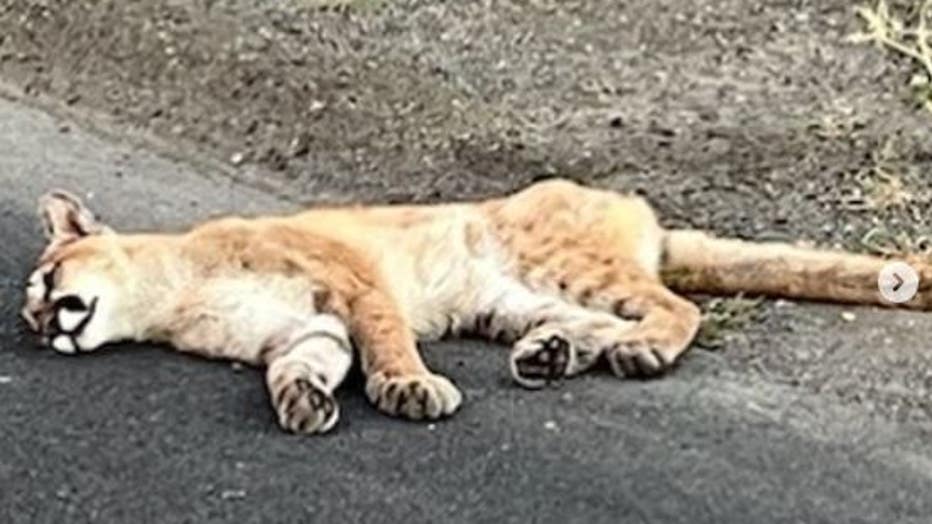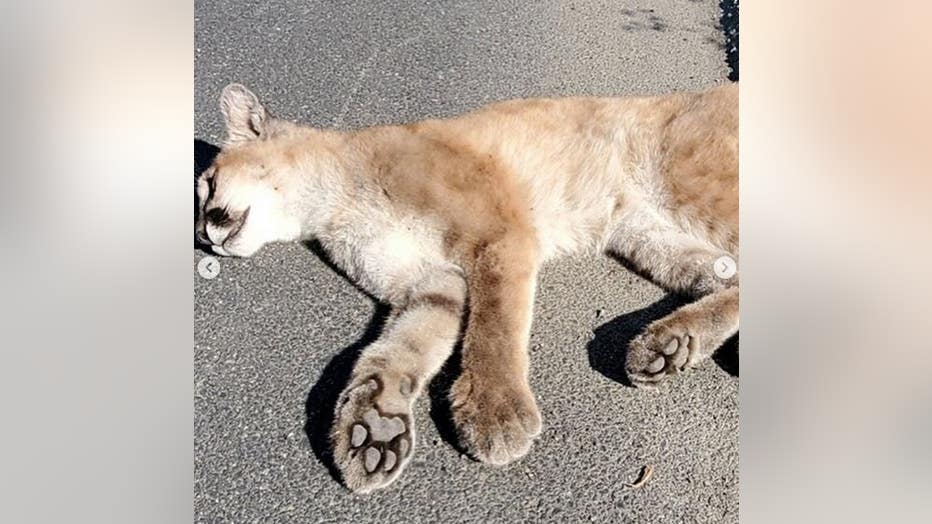Young mountain lion found dead along San Jose's Santa Teresa Blvd., necropsy pending

Photo courtesy Santa Clara Valley Open Space Authority.
SAN JOSE, Calif. - A young mountain lion was found dead along Santa Teresa Boulevard in the South Bay last month, according to a conservation group.
Andrea Mackenzie, general manager with Santa Clara Valley Open Spae Authority, said the mountain lion was likely moving between protected land and struck by a vehicle.
"We don't know cause of death. The assumption is that the animal was struck by vehicle," said Mackenzie.
The animal was found by a motorist early in the morning on Friday, June 30.
The conservation area is nestled between the Santa Cruz Mountains and the Diablo Range at San Jose's southern edge.
The Open Space Authority is a group committed to preserving nature amid the ongoing threat of climate change. They posted to social media on Wednesday that the juvenile feline was found along the boulevard, adjacent to North Coyote Valley Conservation Area, which has been recently protected.
"Mountain lions are beautiful, solitary animals that play an essential role in California's native ecosystems. These big cats need large amounts of ‘connected’ open spaces for hunting, water sources, den sites, finding mates and raising cubs," the group wrote. "Without protected landscapes AND safe pathways to travel between them, wildlife populations cannot survive in the long term."

Photo courtesy Santa Clara Valley Open Space Authority.
The conservation group said California Department of Fish and Wildlife is performing a necropsy and that Santa Cruz's Puma Project also took some samples from the animal.
Mackenzie said the motorist who found the mountain lion moved it to the side of the road and called her organization. Fish and Wildlife collected the animal.
The area is an "important wildlife corridor" according to Mackenzie. There are studies underway to see how to restore the area, as well as planning where the best areas are to have wildlife bridges.
The area's mountain lion population is threatened because its habitat is being cut off by high-speed roadways. Mackenzie likened mountain lions in the Santa Cruz mountains as being on an island when they need to connect to other habitats to migrate, find mates, dens, food and water.

Photo courtesy Santa Clara Valley Open Space Authority.
The population is susceptible to traffic from Highways 17 and 101.
For decades, Coyote Valley was one of the most threatened landscapes in the U.S. Mackenzie said it was threatened with commercial, industrial, and residential development. However, the undeveloped land was purchased in 2019. "We've protected 1,500 acres in the last four years," said Mackenzie.
If there is a sliver lining to this story, Mackenzie said there is a burgeoning interest in finding ways for wildlife to co-exist and to address the biodiversity crisis. "We need to do more to protect the wildlife of this region," she said.

